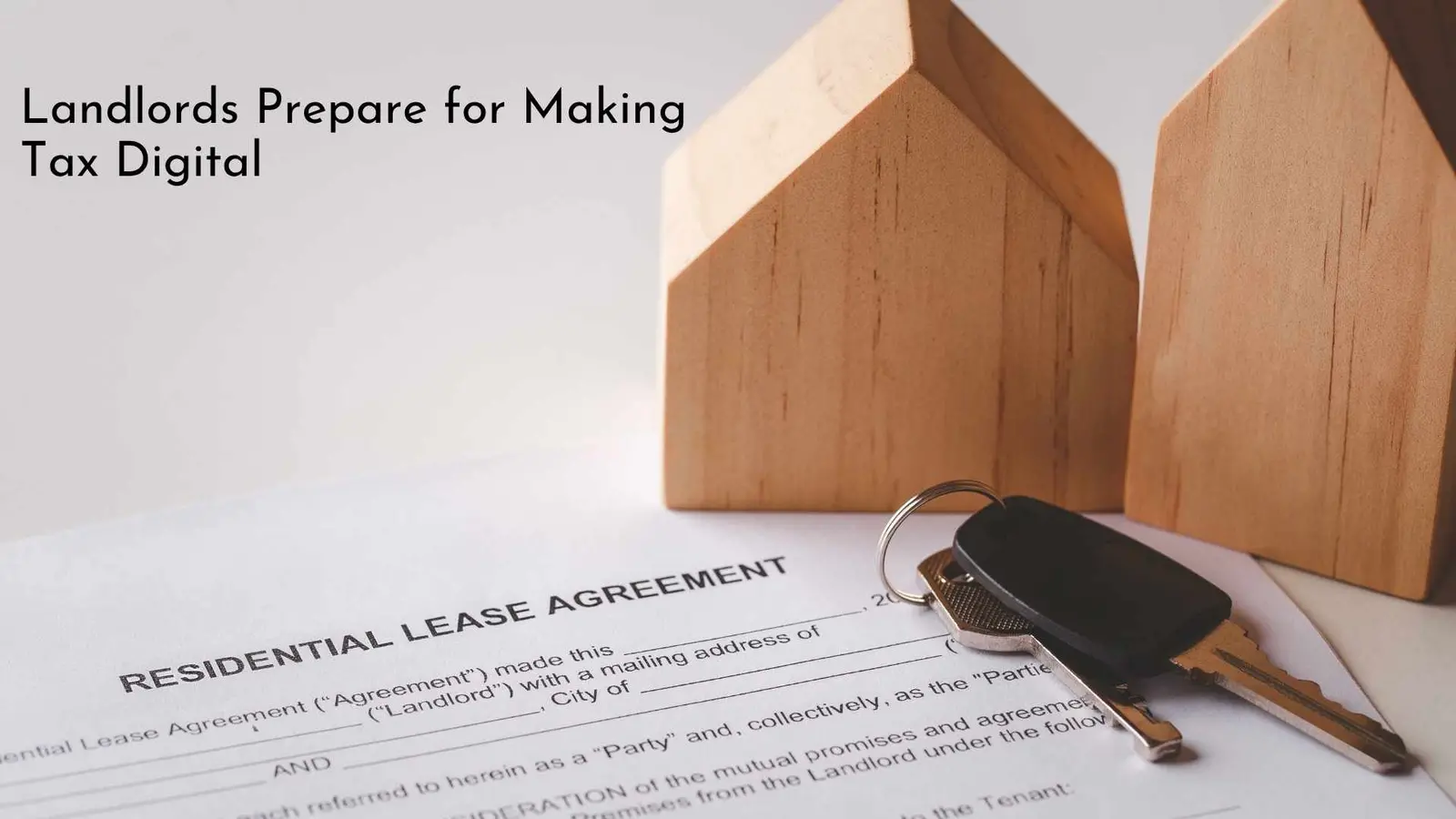We use cookies to personalise site content, social media features and to analyse our traffic. We also share information about your use of this site with our advertising and social media partners.
Posted by - Real estate agent -
on - 4 hours ago -
Filed in - Business -
Accounts landlords incometax -
3 Views - 0 Comments - 0 Likes - 0 Reviews

Making Tax Digital (MTD) is changing how UK landlords keep records and send information to HMRC. If you own rental property, the new rules will require digital record-keeping and quarterly updates submitted through compatible software, followed by a year-end submission.
The rollout starts in April 2026 for higher-income landlords and expands in stages through 2028. Below is a clear, practical plan you can follow now—so you’re organized, compliant, and confident when your first digital deadlines arrive.
MTD for Income Tax Self Assessment (MTD for ITSA) comes in phases:
What counts as qualifying income? HMRC looks at the combined total of your self-employment and property income before expenses. If you have multiple property businesses (e.g., UK and overseas), HMRC assesses the total qualifying income to determine when you start. Use the official eligibility checker and guidance if you’re unsure which phase applies to you.
Under MTD for ITSA, you’ll keep digital records and send quarterly updates summarizing your property income and allowable expenses. Updates are due one month after each quarter ends. After the fourth update, you’ll make a final annual submission (“final declaration”), which replaces the traditional Self Assessment return.
At a glance:
Before you choose software, document how money moves through your rental business:
This mapping becomes your blueprint for digital bookkeeping rules, bank feeds, and receipt-capture workflows once you onboard the software.
Software is the backbone of MTD. Look for tools that HMRC recognizes for MTD for Income Tax and can:
Evaluate against your reality:
One strong, professional option for landlords preparing for MTD is proptino manager—purpose-built to keep rental records digital from day one, streamline quarterly update workflows, and maintain an audit-ready trail across properties, bank feeds, receipts, and reports so you can submit on time with confidence.
Consistency is everything under MTD. Set a lightweight weekly routine that becomes second nature:
By the time you reach your first quarterly update, most of the work will be done.
Create a simple calendar that shows your four quarterly periods, their one-month post-quarter deadlines, and a short internal prep window (e.g., aim to close books within 7–10 days after quarter-end). That gives room for corrections before you submit through your software. HMRC’s guidance explains what qualifies as a quarterly update and confirms you must submit even if no activity occurred.
Tip: Pencil in a brief mid-quarter check to catch missing invoices or uncategorized transactions early. That five-minute habit prevents a month-end rush.
Your final submission confirms the year’s totals and any adjustments outside the quarterly summaries. That is where your accountant (if you use one) will help review allowances, reliefs, and year-end adjustments before you hit submit in your software. Treat the final submission as a mini year-end close: reconcile balances, review accruals, and ensure every property has complete documentation.
Some landlords can apply for an exemption if it’s not reasonably practicable to use digital tools (for example, due to age, disability, or remote location). HMRC has opened the application pathway and encourages you to apply before your mandated start date so a decision can be made in time.
The key takeaway: evaluate your situation now. If you qualify, gather your evidence and apply promptly; otherwise, proceed with software and process setup.
MTD is smoother when your data is tidy:
These habits save hours at quarter-end and reduce bookkeeping noise for the final submission.
Well before your go-live date, do a full rehearsal in your software:
A rehearsal exposes gaps in your process—like missing supplier invoices or bank rules that mis-categorize repairs as capital costs—while there’s still time to fix them. HMRC’s guide explains what is included in updates so you can compare your rehearsal output to expectations.
If you work with a managing agent or accountant:
Clear roles prevent last-minute scrambles and ensure someone is accountable for the submission button.
Even as a one-person landlord business, write down a few simple controls:
These “light controls” reduce errors and make HMRC queries much less stressful.
Plan annual costs for software, bookkeeping support, and year-end review. Also, understand the penalty regime tied to late submissions or payments under MTD. Policy commentary in 2025 highlighted tougher approaches and increased late-payment penalties as MTD expands, underscoring the value of robust quarterly routines.
MTD is a live programme; the details continue to evolve, and HMRC periodically updates guidance, pilot schemes, and software recognition lists. Bookmark the official collection page and revisit it each quarter to catch any changes that affect landlords.
Landlords who put a simple digital rhythm in place now—clean data, weekly categorization, quarterly check-ins, and one solid year-end process—will find the MTD transition manageable. Start with your dates, choose the right software, and rehearse your first quarterly update well before April 2026. That way, when MTD becomes mandatory for your income band, you’ll already be operating the new way—calmly, consistently, and compliantly.

“To assist disaster survivors by providing a source for them to come together in time of need, to aid in the listing of events, information and other forms of assistance, and continuing support through the recovery process.”
Share this page with your family and friends.